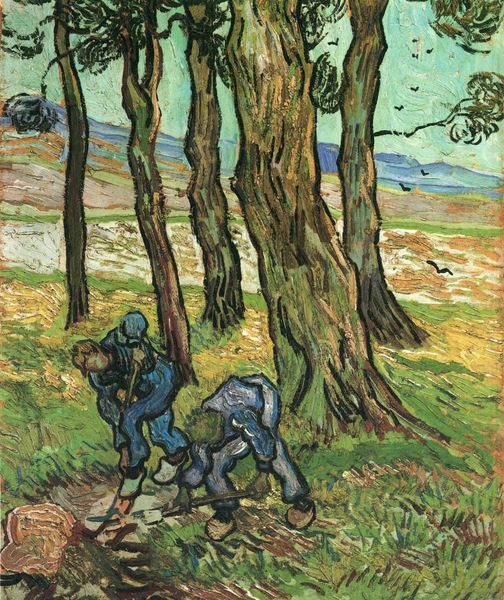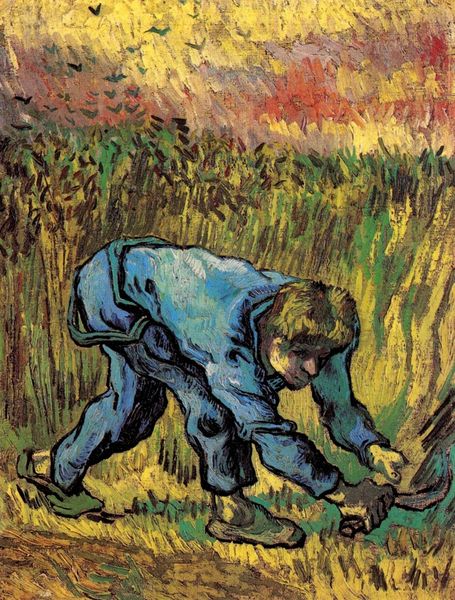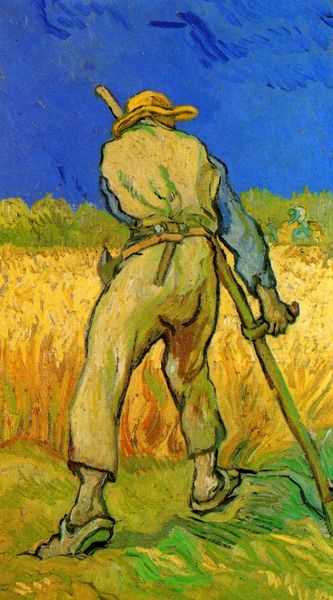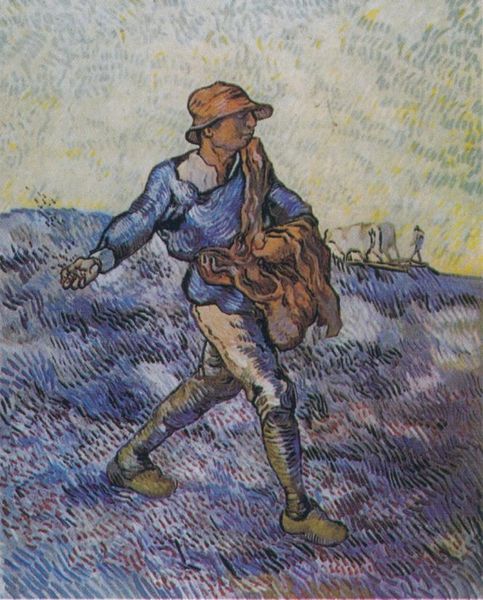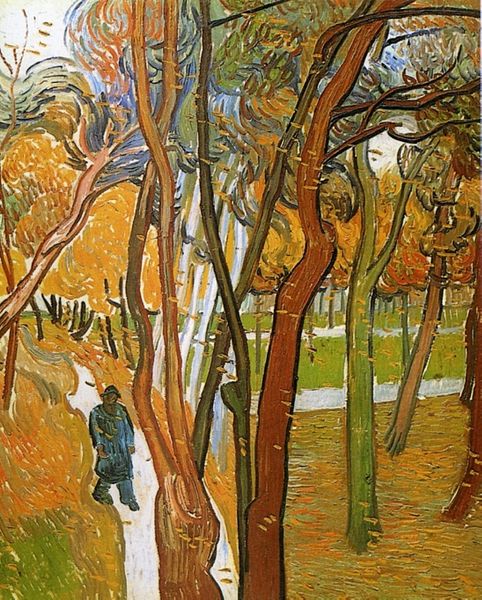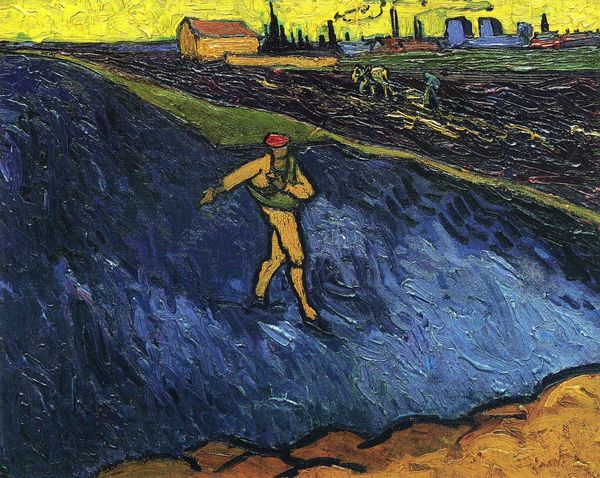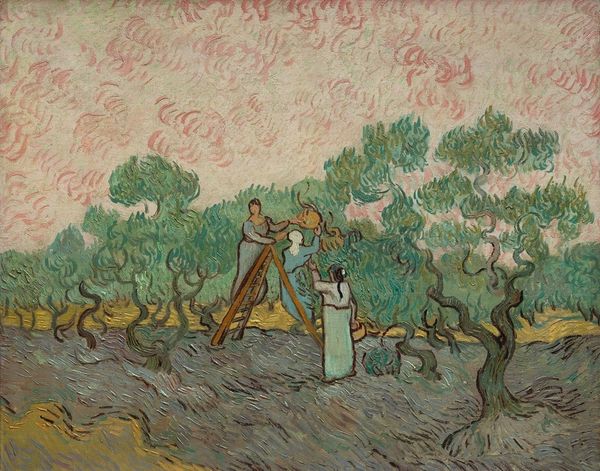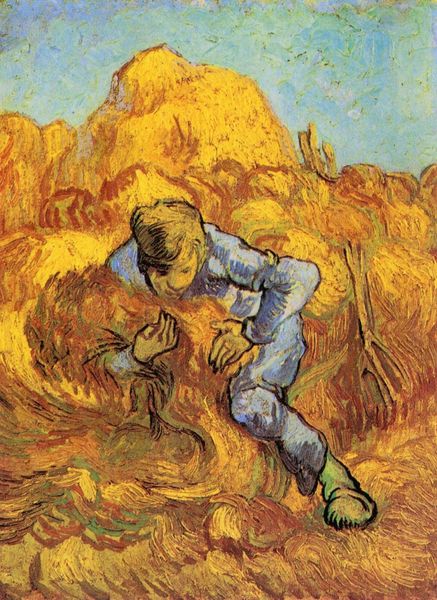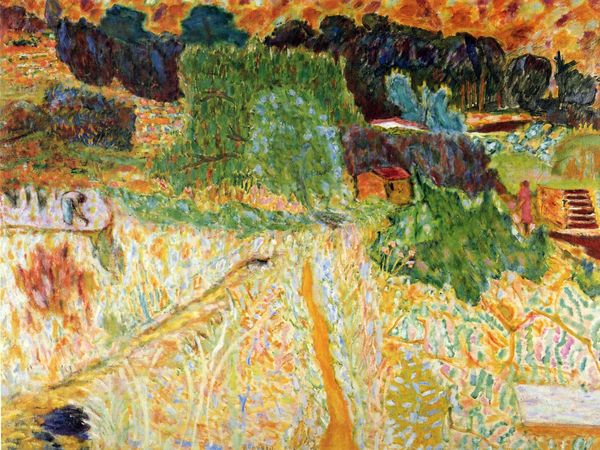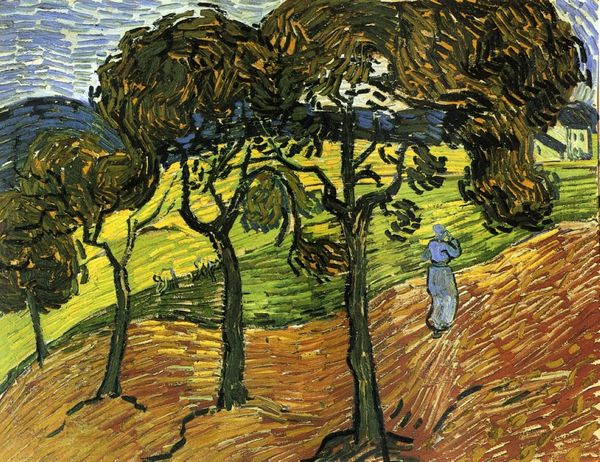
Selfportrait on the Road to Tarascon (The Painter on His Way to Work) 1888
0:00
0:00
vincentvangogh
Destroyed
Dimensions: 48 x 44 cm
Copyright: Public domain
Curator: This is Vincent van Gogh's "Selfportrait on the Road to Tarascon," painted in 1888. Editor: It feels a bit melancholic, don't you think? All that empty road ahead... the figure seems so small amidst the landscape. It's interesting because there's dynamism but also a sense of solitude in how he pictures himself trudging along the ochre path. Curator: There's a reason for that melancholy, perhaps. Van Gogh painted this self-portrait while living in Arles, a period of intense creativity but also growing mental instability. He captures himself, quite literally, on the way to work. It's almost an "everyman" image, romanticising his labor of painting en plein air, but tinged with premonition, perhaps of lost stability and happiness. Editor: I find it so revealing that this image of "the artist at work" omits the very act of artistic creation. Instead, the painting zeroes in on that solitary journey; the weight of his supplies hints at the physical strain, yet the blank canvases he carries tell another story - the looming prospect of another attempt, another beginning in his daily life. I read the flattened perspective and bright colors as reflecting something akin to post-impressionistic exhaustion with reality, but also perhaps of anticipation in this moment, where creation still hasn't occurred. Curator: Indeed. Van Gogh's impasto technique – that thick application of oil paint – brings a certain visceral energy to the road itself, alive and humming with the south of France's characteristic light and wind, almost a palpable burden accompanying him in this moment. Yet the loose brushstrokes almost threaten to break everything down, too. It becomes this poignant balance between hopeful progress and a looming sense of instability, a dance that echoes within his own emotional and artistic journey. Editor: Thinking about roads, and travel as symbols – I wonder if we should see this image, in part, as Van Gogh attempting to find solidarity with other figures in the nineteenth century like the Impressionists who attempted to represent daily urban realities like train travel? Perhaps here the image can offer us insight into Van Gogh's attempts to construct an identity through mobility and engagement with an often unstable reality? Curator: That's a compelling connection! In this instance, though, unlike with Manet's Gare Saint-Lazare or Monet's Train in the Snow, where rail travel presents itself as emblematic of modernity, Van Gogh is on foot; slow progress is a deliberate sign. It sets him off, somewhat melancholically, and creates space for considering the specific realities of an individual on the road alone. This is what can make this painting feel like a moment that is all his own. Editor: Right, I see it now - and it speaks volumes about the complexities of individual expression and identity when read as one who perhaps is actively attempting to situate himself in an established historical period that maybe hasn't quite embraced him yet, either! Curator: An artist truly pushing to find and redefine himself – one foot in front of the other.
Comments
No comments
Be the first to comment and join the conversation on the ultimate creative platform.
